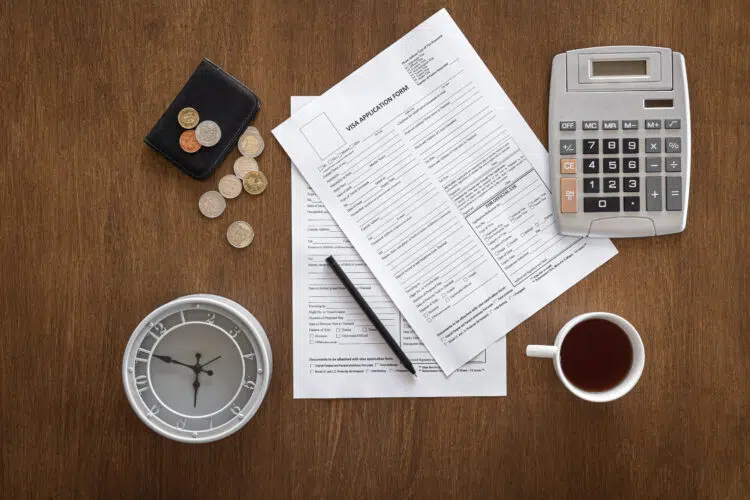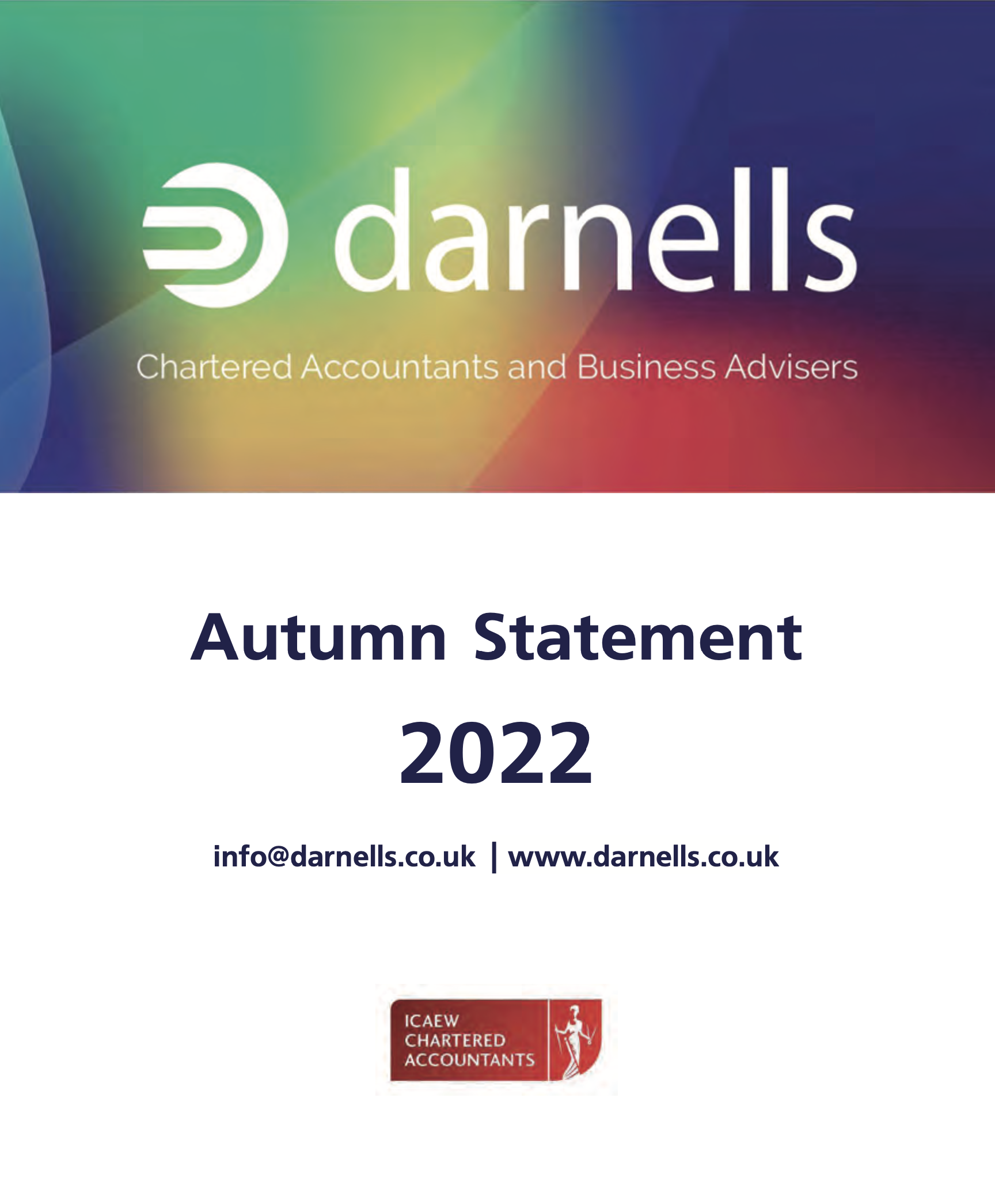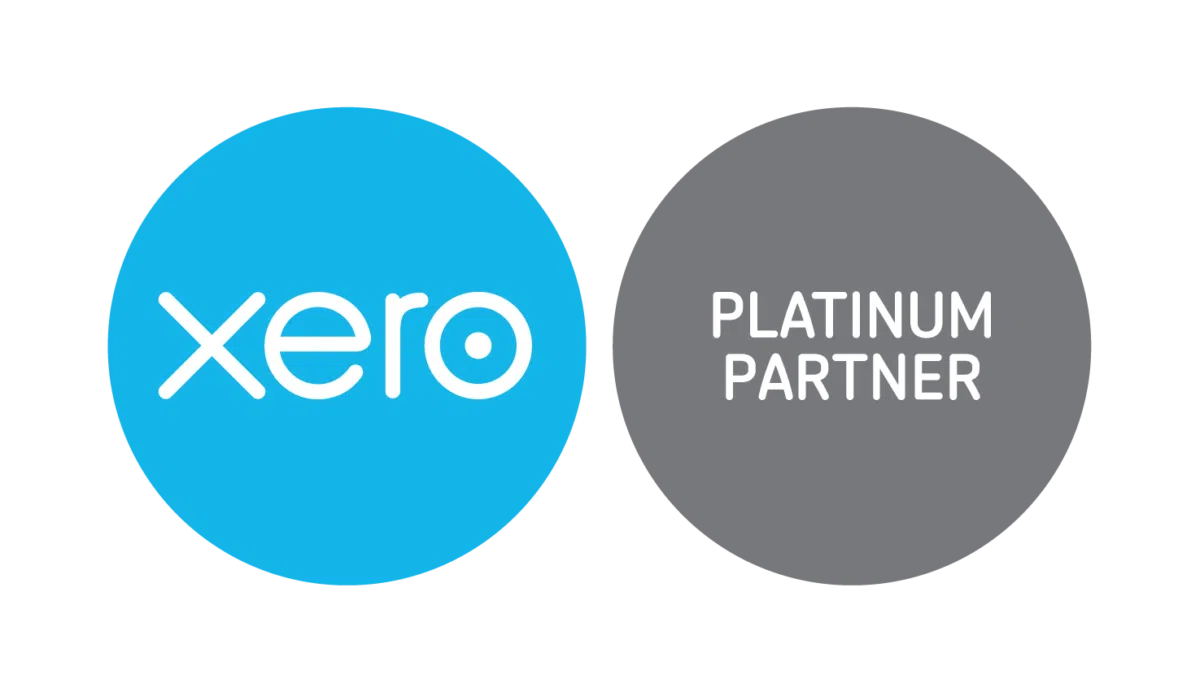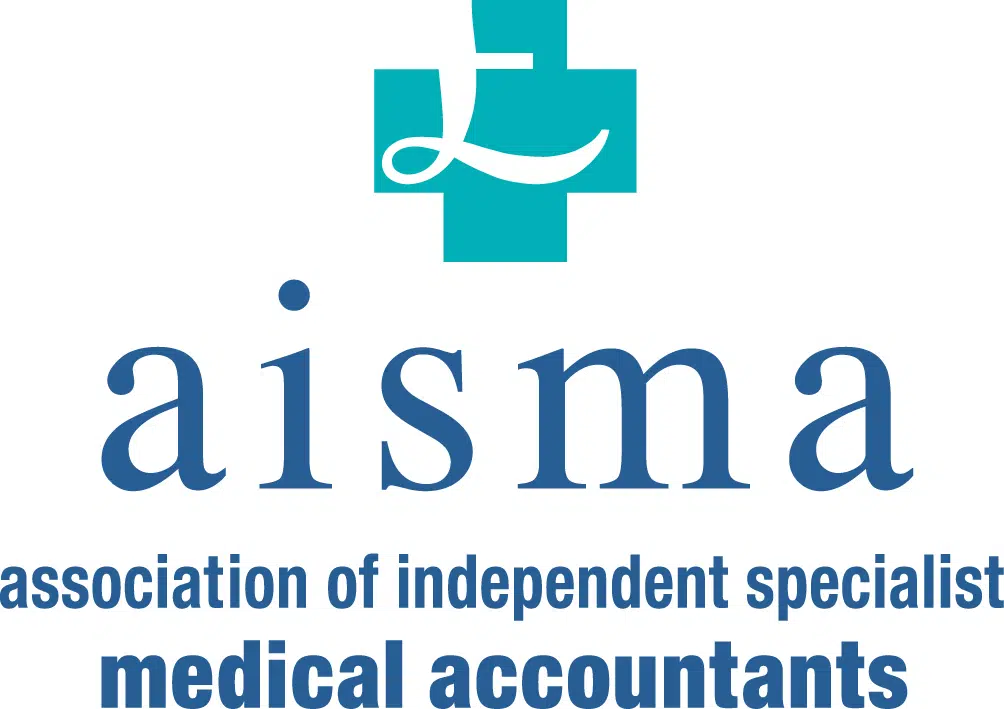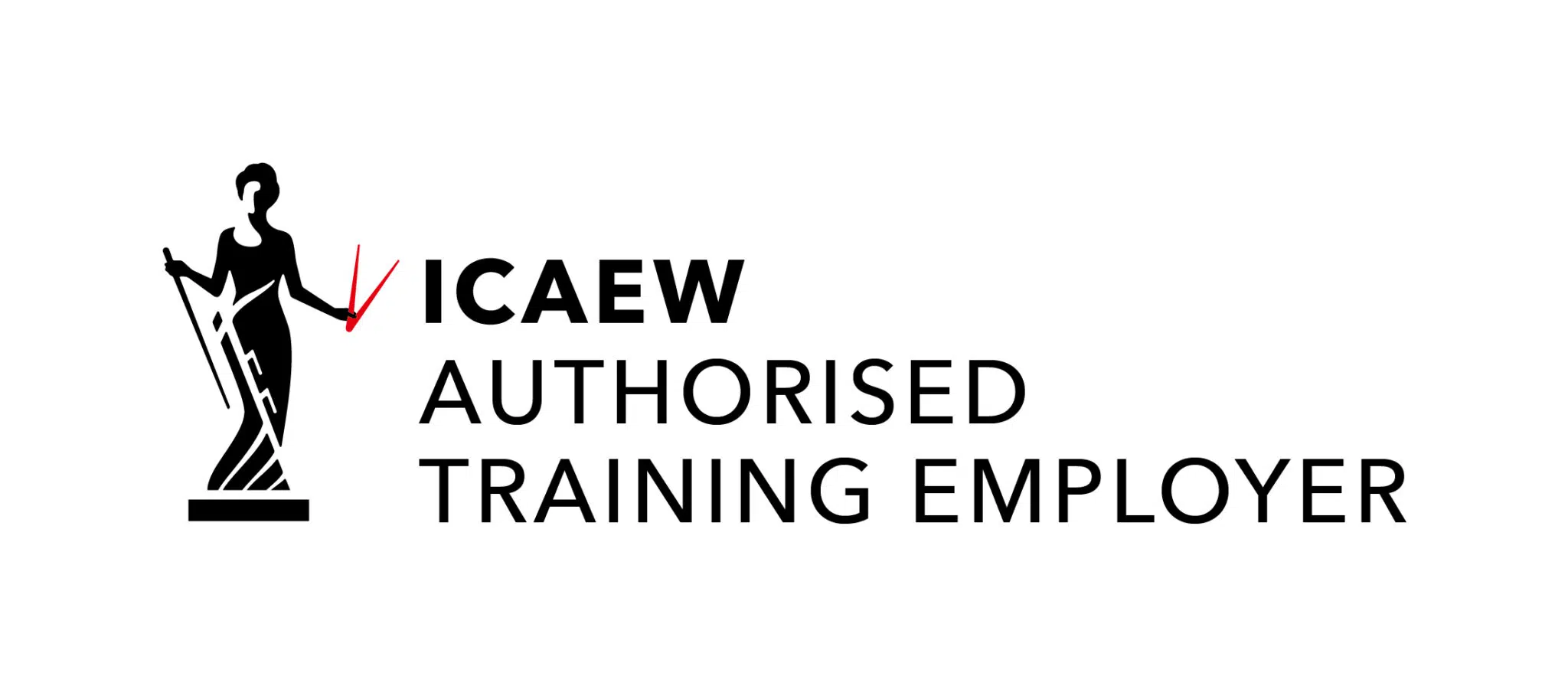Autumn Statement 2022
Published: 13th October 2023

This Summary covers the key tax changes announced in the Chancellor’s speech and includes tables of the main rates and allowances. At the back of the Summary you will find a calendar of the tax year with important deadline dates shown. We recommend that you review your financial plans regularly as some aspects of the Budget will not be implemented until later dates. We will, of course, be happy to discuss with you any of the points covered in this report and help you adapt and reassess your plans in the light of any legislative changes.
Twists and turns
When the Chancellor of the Exchequer makes a fiscal statement to Parliament – whether it is called a Budget, a mini-Budget or an Autumn Statement – the headlines are in the speech and the details are in the Treasury Red Book that is published on the internet when he sits down. In normal times, it is hard enough to keep track of changes that come in immediately, changes that are coming soon, and proposals that are on the horizon.
This year is not normal. There have been four Chancellors and three fiscal statements. The challenge following Jeremy Hunt’s first Autumn Statement has been to identify what, if anything, of Kwasi Kwarteng’s proposals survived, as well as understanding the steps he has taken to fill the holes in the government coffers that the ill-fated September ‘Plan for Growth’ helped to create. There has been a great deal of speculation about what Mr Hunt might do, and sometimes an awareness of what has not been said can be important too.
This document summarises the main changes that were announced by Mr Hunt, as well as setting out what has survived and what has been cancelled from the September plan, and points out some of the rumoured possibilities that have come to nothing. One of Mr Hunt’s tax raising measures is a promise to freeze the main thresholds for income tax and inheritance tax for the next five years – that may be something of a relief after a year in which three different sets of National Insurance rates have applied, but the effects of inflation will draw more people into paying these taxes and more of them into liability for higher rates. There are also more obvious tax rises through reductions in reliefs and exemptions and a lowering of the point at which the top rate of income tax applies.
One of Mr Kwarteng’s proposals was the abolition of the Office of Tax Simplification. He said that he would mandate every tax official to focus on simplification of the tax code. Sadly, it never seems to get any simpler. If you would like to discuss what these measures mean for your individual circumstances, we will be pleased to help
Significant points
- Basic rate of income tax to remain at 20% and additional rate at 45% for 2023/24
- Most tax rate bands frozen at current levels until 5 April 2028
- 45% rate will apply to income above £125,140 in 2023/24
- Dividend income and capital gains to be more heavily taxed from 2023/24
- No changes announced to pension tax reliefs
- Inheritance tax thresholds also frozen until 5 April 2028
- Corporation tax rate increase to 25% from 1 April 2023 restored
- VAT registration threshold frozen at £85,000 for two more years, to 31 March 2026
- Affirmation of support for the state pension ‘triple lock’ with an inflation-linked increase from April 2023
Personal Income Tax
Tax rates and allowances – 2023/24 (Table A)
In March 2022, Rishi Sunak announced his intention to cut the basic rate of income tax from 20% to 19% from 6 April 2024. In September, Kwasi Kwarteng proposed to bring the cut forward by a year to 6 April 2023, and to abolish the 45% rate of tax that applies to income above £150,000 from the same date.
The reversal of these tax cuts had already been announced before the Autumn Statement. The current forecasts are based on the rates remaining 20%, 40% and 45% for the foreseeable future. Mr Hunt announced that the tax-free personal allowance and the 40% tax rate threshold will be fixed until 5 April 2028, while the 45% rate will apply to income above £125,140 from 6 April 2023. A person with earnings above £150,000 will pay an additional £1,243 compared to 2022/23.
Although ‘freezing the thresholds’ avoids the appearance of a direct tax increase, it is obvious that the effect of inflation will bring many more people into the higher rate bands. Apart from the increase in the proportion of income that will be taken in tax, more people are likely to have to file self-assessment returns because they will have tax liabilities that are not completely settled under PAYE.
Two other thresholds remain fixed, as they have been since they were introduced: the income levels at which the High Income Child Benefit Charge begins to claw back Child Benefit receipts (£50,000 since 2012/13) and at which the tax-free personal allowance is withdrawn (£100,000 since 2010/11). These measures create a higher marginal tax rate in the income bands £50,000 – £60,000 (for those in receipt of Child Benefit) and £100,000 – £125,140 (as the personal allowance is reduced to nil). The effective marginal rate of tax for someone earning between £100,000 and £125,140 is 60% (as £1 of allowance is lost for every £2 of income); in 2022/23 the marginal rate falls to 40% for income between £125,140 and £150,000, but in 2023/24 it will be 45% above £125,140.
These rates and thresholds will not automatically apply in Scotland, where tax rates on non-savings, non-dividend income are set by the Scottish Parliament, which will announce its Budget on 15 December. The Welsh Assembly also has the right to set its own tax rates for non-savings, non-dividend income, but has so far kept to the main UK rates. Savings and dividend income are subject to the same rates throughout the UK, regardless of residence.
Dividend income
In Mr Sunak’s Spring Budget, the tax rates on dividend income over £2,000 were increased to correspond to increases in National Insurance Contributions (NICs) taking effect from 6 April 2022 and the Health and Social Care Levy (HSCL) that was to have applied to earned income from 6 April 2023. The ordinary dividend rate, paid by basic rate taxpayers, rose from 7.5% to 8.75%; the upper rate (for higher rate 4 taxpayers) is 33.75% (from 32.5%) and the additional rate (for those with income above £150,000 a year) is 39.35% (from 38.1%). These rates apply across the UK for the 2022/23 tax year.
Mr Kwarteng proposed to reverse these increases in dividend taxation with effect from April 2023, as well as cancelling the HSCL altogether and reversing the increases in NICs from 6 November 2022. The cancellation of HSCL and the reductions in NICs are the most significant parts of Mr Kwarteng’s mini-Budget to survive; however, the dividend rates will remain at their current higher levels in 2023/24 and for the foreseeable future. The additional rate of 39.35% will apply to those with total income above £125,140 in 2023/24.
In addition, the dividend allowance will be reduced. It was introduced in April 2016 at £5,000, then cut in April 2018 to £2,000; it will now fall to £1,000 on 6 April 2023 and £500 on 6 April 2024. This will raise about £0.5 billion in the first year and nearly £1 billion a year after that, roughly the same as the reduction in the 45% rate threshold. A company owner who takes profits mainly in the form of dividends, and has total income between £50,000 and £125,140, will pay £337 more tax in 2023/24 as a result of this change. However, the benefit of the allowance is not just financial: it means that taxpayers with a small amount of dividend income do not have to report it to HMRC, because there is no tax to pay. The reduction in the allowance will require many more people to file self-assessment tax returns to settle what will often be a relatively small tax liability.
Employees
Company cars and fuel
Car benefits remain fixed until the end of 2024/25. The Autumn Statement included confirmation of the rates going forward until April 2028 ‘to provide long term certainty for taxpayers and industry’. Rates will continue to incentivise the take-up of electric vehicles:
- appropriate percentages (to multiply by the list price of the car) for electric and ultra-low emission cars emitting less than 75g of CO2 per kilometre will increase by 1 percentage point in 2025/26; a further 1% in 2026/27 and a further 1% in 2027/28, up to a maximum appropriate percentage of 5% for electric cars and 21% for ultra-low emission cars;
- rates for all other vehicle bands will be increased by 1 percentage point for 2025/26, up to a maximum appropriate percentage of 37%, and will then be fixed in 2026/27 and 2027/28.
From 6 April 2023, the taxable amounts for an employee’s private use of business fuel in a company car or van, and the availability of a van for more than incidental private use, will increase in line with the rise in the Consumer Price Index to September 2022 (10.1%).
IR35 – ‘off payroll working’
The rules known as ‘IR35’ were introduced in April 2000 in an attempt to prevent tax avoidance through ‘disguised employment’. An individual working through a company, which raises invoices and pays out its profits mainly in the form of dividends, could save significant amounts of income tax and National Insurance Contributions in comparison to someone doing the same work as an employee covered by the PAYE system. The intention of the rules was to charge the same PAYE and NIC on workers based on the nature of the relationship with the payer of the remuneration, irrespective of whether the worker contracts with the engager directly or via a company. If that relationship would have been regarded as an employment contract in the absence of the company, the contractor’s company (broadly) has to account for payroll taxes on that income.
Since 2021, both public bodies and larger companies engaging freelancers who operate via their own company have had to decide whether there is an underlying employment relationship with the worker and, if so, withhold PAYE and Class1 NICs. In September, Mr Kwarteng announced his decision to repeal these rules, so that such decisions would have to (as in the past) be self-assessed by the worker and their company.
This is one of the September proposals that was reversed even before the Autumn Statement, maintaining the position as it has been since 2021. The result is that those who have been affected by the off-payroll working rules while supplying services to public sector bodies or large private sector businesses in the last few years will continue to be affected in the same way, rather than seeing a possible change to their situation. The client serviced by the personal service company will continue to decide if it will apply PAYE to the invoice rendered by the company. If the rules had been repealed, the worker would have made the decision on the status of the relationship with the client.
Company Share Ownership Plans (CSOP)
The September Growth Plan proposed that from April 2023, qualifying companies will be able to issue up to £60,000 of CSOP options to employees, double the current limit. Some restrictions will be eased to align the rules more closely to the Enterprise Management Incentive scheme and widen access to CSOP for growth companies. These proposals appear to be among the few that have survived beyond the Autumn Statement.
National Living Wage (NLW)
From 1 April 2023, there will be an increase to the NLW and National Minimum Wage (NMW). NLW relates to those aged 23 and over, while NMW relates to those of a younger age. The new hourly rates are:
Age 23+ £10.42 (from £9.50)
21 – 22 £10.18 (from £9.18)
18 – 20 £7.49 (from £6.83)
16 – 17 £5.28 (from £4.81)
Apprentices £5.28 (from £4.81)
National Insurance Contributions (NIC)
Thresholds and rates (Table C)
From 6 April 2022, Class 1 NIC paid by employers and employees, and Class 4 NIC paid by self-employed people, increased by 1.25%. This was intended as a temporary measure for the tax year 2022/23, pending the introduction of a separate Health and Social Care Levy (HSCL) to be paid by the same people on the same income from 6 April 2023. Chancellor Sunak moderated the effect of the increase by significantly increasing the primary threshold at which employees’ contributions start, to match the level at which income tax starts to be payable – an annual figure of £12,570. This was done ‘as soon as practicable’, taking effect on 6 July.
In September, Mr Kwarteng decided to cancel the HSCL altogether, and to reverse the increases in NIC, once again from the earliest practicable date – 6 November 2022. Changing the rates of NIC twice in the middle of a tax year has created considerable complexity for employers and their software providers, and there are a number of situations in which anomalous and possibly unfair liabilities can result. Overall, however, the restoration of the original rates combined with the increased threshold (which was not changed in November) will lead to lower charges for many people.
The cancellation of the HSCL was costed in September as a reduction in government revenues of approximately £17 billion a year, and the decision not to reintroduce it has required the Chancellor to look for many other tax rises and spending cuts.
The Autumn Statement included details of the rates and thresholds for 2023/24. The Upper Earnings Limit (above which individual contributions fall from 12% to 2%) and the Secondary Threshold (above which employers pay 13.8% on all earnings) will remain fixed at their current levels (£50,270 and £9,100) until 5 April 2028. The Autumn Statement comments that many small businesses will not be adversely affected because of the Employment Allowance, which covers the first £5,000 of employer contributions for qualifying companies.
Savings and Pensions
Pension contributions (Table B)
In spite of speculation in some quarters that reducing tax reliefs on pension contributions or pension funds would be an area in which the Chancellor could find some of the money he needs, there were no announcements concerning tax on pensions. The tax reliefs and the restrictions on the amounts that can enjoy relief (Annual Allowance and Lifetime Allowance) remain the same.
State pension
Following some speculation about whether the Conservative manifesto commitment to the ‘triple lock’ on state pension increases was affordable, the state pension will be uprated by inflation, in line with that commitment. The standard minimum income guarantee in Pension Credit will also increase in line with inflation from April 2023 (rather than in line with average earnings growth). This will ensure pensioners on the lowest incomes are protected from inflation and do not lose some of their state pension increase in the Pension Credit means test.
Venture capital schemes
The Seed Enterprise Investment Scheme (SEIS) gives investors income tax and capital gains tax reliefs on investments in shares of new start-up companies. Mr Kwarteng’s Growth Plan increased the limit on the amount companies can raise through a SEIS share issue by two-thirds to £250,000 from 6 April 2023, to enable more companies to use the scheme. The gross assets limit for the company before the share issue will be increased to £350,000, the age limit will rise from 2 to 3 years, and the annual investor limit will double to £200,000. The Growth Plan estimated that 2,000 companies a year use the scheme and will potentially benefit from these changes, which have survived the overhaul of most of Mr Kwarteng’s proposals.
Capital Gains Tax (CGT)
Cut in annual exemption
There was much speculation about major reform to CGT, including possible increases in rates; however, the changes announced were more modest. The Annual Exempt Amount (AEA), which is currently £12,300, is being reduced to £6,000 for 2023/24 and then to £3,000 for 2024/25. This will mean extra CGT being payable where gains are above the new limits. For someone with gains above £12,300, this will mean extra CGT payable on residential property gains (which have a maximum CGT rate of 28%) of up to £1,764 in 2023/24 and £2,604 in 2024/25. If the gains are on other assets, such as shares or antiques (where the maximum rate is 20%), this will mean increased CGT payable of up to £1,260 (2023/24) and £1,860 (2024/25). The total raised is not very significant in comparison to other taxes – only £1.6 billion in total over the five years from 2023/24 to 2027/28.
This reduction in the AEA will also mean that many more taxpayers will need to file the CGT pages of the self-assessment tax return. These pages need completing unless both:
- net gains do not exceed the AEA; and
• the total proceeds from all disposals do not exceed 4 x AEA .
By 2024/25, this will mean filing the CGT pages if total proceeds exceed £12,000 or net gains exceed £3,000.
Trusts
As the AEA available to most trusts is half of an individual’s AEA, this will become £3,000 for 2023/24 and £1,500 for 2024/25. As for individuals, no changes in the rates of CGT were announced; they remain 28% for residential property and 20% for other assets.
Anti-avoidance
For their first 15 years of UK residence, non-domiciled individuals can elect to be taxed on their foreign income and gains only if the proceeds are remitted to the UK (the ‘remittance basis’ of taxation). Significant changes to ‘non-dom’ taxation were expected in some quarters, but the only announcement was anti-avoidance to cover a particular planning strategy.
The new rules ensure that UK resident non-domiciled individuals are taxed on gains and distributions received after value has been built up in a UK business. This is achieved by amending the law so that where, on or after 17 November 2023, shares and securities in a UK close company (broadly, a company controlled by five or fewer shareholders) are exchanged for those in a non-UK company (that would be close if situated in the UK), the new shareholding will be deemed to be located in the UK.
This means that dividends paid by the non-UK company will be treated as UK dividends and any disposal of the securities will be treated as a disposal of a UK asset, so the remittance basis will not be available.
This change will only have effect where an individual has a material interest in both companies (i.e. holds at least 5% of the securities in the UK company before exchange and in the non-UK company after exchange). It is expected to raise £830m over 5 years.
Inheritance Tax (IHT)
Nil rate thresholds
The IHT nil rate band (NRB) has been frozen at £325,000 since 6 April 2009; the residence NRB has been £175,000 since 6 April 2020. It was previously announced that these figures would remain fixed until April 2026; this has been extended for another two years until April 2028, bringing more people within the scope of IHT as assets (particularly houses) rise in value.
The residence NRB is only available when a home is left to a direct descendent (or their spouse) on death. When an individual’s estate (before reliefs and exemptions) is valued at more than £2m, the residence NRB is progressively reduced. £1 of residence NRB is lost for every £2 by which the estate exceeds the limit, so none is available once an estate reaches £2.35m. This £2m taper threshold is also now frozen until April 2028.
There have been no changes to the IHT rates, so the main rate remains 40% for transfers on death in excess of the NRBs.
Business Tax
Annual Investment Allowance (AIA)
The 100% AIA, which is available to companies and unincorporated businesses, is available for qualifying expenditure on Plant and Machinery (P&M) up to £1 million. When this limit was introduced, it was supposed to be a temporary measure in force until 31 March 2023, after which it would drop back to its former level of £200,000. In September Mr Kwarteng announced that the higher limit would be made ‘permanent’, and Mr Hunt has confirmed that this measure will be retained. According to the Budget documents, 99% of businesses investing in P&M spend less than £1 million a year and are therefore able to claim full relief in the year of purchase.
First Year Allowance for Electric Vehicle Chargepoints
The Spring Finance Bill 2023 will legislate to extend the 100% First Year Allowance for expenditure incurred on electric vehicle chargepoints to 31 March 2025 for corporation tax purposes and 5 April 2025 for income tax purposes. This will ensure that the tax system continues to incentivise business investment in charging infrastructure.
Reform of basis periods
Neither Mr Kwarteng in September nor Mr Hunt in November mentioned any changes in the planned reform of basis periods for taxation of profits of unincorporated businesses and partners in Limited Liability Partnerships (LLPs). In spite of concerns expressed by some that businesses may not be ready, taxation of profits arising in the tax year will be introduced in 2024/25; 2023/24 will be a transitional year for moving from the old to the new basis of assessment. Any self-employed trader, partnership or LLP with an accounting date other than 31 March or 5 April should consider the effect of this change as a matter of urgency.
Corporation Tax (CT)
Rates
In September, Mr Kwarteng announced that he was not going to proceed with the already legislated increases in corporation tax, due to take effect on 1 April 2023. Jeremy Hunt had already announced that he was reversing this policy and reinstating the tax rises.
The CT rate will remain 19% until 31 March 2023. It will then increase to 25% for companies with profits over £250,000. The ‘small profits rate’ that was familiar before April 2015 will be reintroduced, at 19% for companies with profits up to £50,000.
Between £50,000 and £250,000 there will be a tapering calculation that produces an effective marginal rate of 26.5% on profits within that band. The limits will be divided between the number of associated companies (companies under the common control of one or more persons, including both individuals and companies).
Super-deduction
To encourage companies not to delay investing in plant and machinery until CT rates went up, Chancellor Sunak had introduced a ‘super-deduction’ at a rate of 130% for qualifying expenditure between 1 April 2021 and 31 March 2023. This effectively gives relief at close to 25% for expenditure incurred before 1 April 2023, rather than:
- a 100% AIA, saving corporation tax at only 19%; or
- if the AIA limit has been exceeded, only the 18% p.a. Writing Down Allowance (WDA) available in the main capital allowances pool.
Where an accounting period straddles 31 March 2023, there are transitional rules to limit the amount of super-deduction available, so that the effective tax relief given on the expenditure does not exceed 25%.
The temporary First-Year Allowance (FYA) of 50% on new plant and machinery investment that would qualify for 6% p.a. WDA in the ‘special rate’ pool, such as integral plant in buildings, also comes to an end on 31 March, as planned.
Research and Development (R&D)
The CT system encourages R&D via two different schemes. The enhanced expenditure scheme for small and medium-sized enterprises (SMEs) increases qualifying expenditure by 130%, so that for every £100 spent, the company enjoys a deduction of £230 from taxable profits. This may create or increase a tax loss. Where there are no other profits against which a loss generated by R&D expenditure can be set, the loss may be surrendered to HMRC in exchange for a payable tax credit at 14.5%.
This scheme is particularly useful to start-up companies and those struggling to make profits in their early years. It is also open to abuse, so the government is amending the scheme. For expenditure on or after 1 April 2023, the additional deduction will decrease from 130% to 86% and the payable credit rate will decrease from 14.5% to 10%. For a loss-making company with, say, £20,000 of qualifying R&D expenditure, the payable tax credit will reduce from £6,670 to £3,720.
Large companies have a different scheme, the RDEC (Research & Development Expenditure Credit). This allows companies a taxable expenditure credit for qualifying R&D. While limiting the tax relief for SMEs, the Chancellor is boosting the RDEC from 13% to 20% from the same date. These changes appear to be the start of a process of moving all companies to an RDEC-like scheme, something on which the government intends to consult.
As previously announced, the R&D tax reliefs will also be reformed by expanding qualifying expenditure to include data and cloud costs, refocusing support towards innovation in the UK, targeting abuse and improving compliance.
Creative industry reliefs
There are numerous reliefs available to the audio-visual sector, covering film, animation, high-end TV, children’s TV and video games. The government will consult on a series of proposals to incentivise further the production of culturally British content and support the growth of these types of company.
Other matters
The increase in the main rate of CT has caused the government to make two further changes. The Bank CT Surcharge will become 3% of a bank’s profits above £100 million from April 2023, meaning that banks will continue to pay a higher combined rate of corporation tax than most other companies.
From April 2023, the rate of Diverted Profits Tax (payable where profits have been ‘diverted’ offshore by big companies or groups) will increase from 25% to 31%, in order to retain a six percentage points differential above the main rate of Corporation Tax.
Following consultation, the government has decided not to introduce an Online Sales Tax, which some people have argued is necessary to level the playing field between online retailers and those incurring the cost of ‘bricks and mortar’ high street shops.
Value Added Tax
Registration threshold
The level at which a business is required to register for VAT (taxable turnover of £85,000 in the last 12 months, or expected in the next 30 days) has been fixed since 1 April 2017. It was previously announced that it would remain at the same level until 31 March 2024, but this has now been extended to 31 March 2026. The effect of inflation will require many businesses that are trading below the threshold to register and account for VAT.
The deregistration threshold is fixed at its current level of £83,000 for the same period.
VAT-free shopping
Up to 31 December 2020, it was possible for non-EU visitors to the UK to obtain a refund of VAT paid on goods purchased while here and taken out of the country in their personal baggage. This was abolished as one of the consequences of Brexit. In September, Mr Kwarteng proposed to introduce a new system ‘with the aim of providing a boost to the high street and creating jobs in the retail and tourism sectors’. This proposal has been cancelled before there was even a consultation about how it would work, disappointing those who were hoping to attract foreign retail customers with tax-free shopping.
Property
Stamp Duty Land Tax (SDLT)
On 23 September 2022, the government increased the nil rate threshold (NRT) for SDLT from £125,000 to £250,000 for all purchasers of residential property and from £300,000 to £425,000 for first-time buyers. The maximum purchase price for which the first-time buyer’s threshold applies was increased from £500,000 to £625,000.
These increases in thresholds are now regarded as ‘temporary’ and will remain in place until 31 March 2025 ‘to support the housing market and the hundreds of thousands of jobs and businesses which rely on it.’ If history is a guide, such a preannounced increase in SDLT may well lead to a boom in house prices as the date approaches.
SDLT only applies in England and Northern Ireland. Decisions about the devolved taxes in Scotland (Land and Buildings Transaction Tax) and Wales (Land Transaction Tax) will be taken by their respective governments.
Annual Tax on Enveloped Dwellings (ATED)
ATED applies to residential property worth above £500,000 that is owned through companies and other corporate structures, unless the situation qualifies for a relief. The rates increase automatically each year with inflation and will rise by 10.1% from 1 April 2023, in line with the September 2022 Consumer Price Index. The amount payable varies according to the value of the property and for 2023/24 ranges from £4,150 to £269,450.
There are fixed revaluation dates every five years for properties within ATED. The revised values from the most recent revaluation (April 2022) take effect for ATED payable from 1 April 2023, so a property may move into a higher valuation band in the coming year as a result.
There are fixed revaluation dates every five years for properties within ATED. The revised values from the most recent revaluation (April 2022) take effect for ATED payable from 1 April 2023, so a property may move into a higher valuation band in the coming year as a result.
Business Rates
From 1 April 2023, charges for business rates in England will be updated to reflect changes in property values since the last revaluation in 2017. A package of targeted support worth £13.6 billion over the next 5 years will give transitional relief to businesses as they adjust to the new level of their charges.
- Multiplier Freeze – The business rates multipliers will be frozen in 2023/24. This will support all ratepayers, large and small, and will result in costs being 6% lower than without the freeze, before any reliefs are applied.
- Upwards Transitional Relief – This will support ratepayers by capping bill increases caused by changes in rateable values at the 2023 revaluation. The ‘upward caps’ will be 5%, 15% and 30% respectively for small, medium and large properties in 2023/24.
- Retail, Hospitality and Leisure Relief – Support for eligible retail, hospitality, and leisure businesses is being extended and increased from 50% to 75% business rates relief, capped at £110,000 per business in 2023/24.
- Supporting Small Business Scheme (SSBS) – Bill increases for the smallest businesses losing eligibility for, or seeing reductions in, Small Business Rate Relief (SBRR) or Rural Rate Relief (RRR) will be capped at £600 per year from 1 April 2023. This means the maximum bill increase in 2023/24 for a small business losing eligibility for SBRR or RRR will be £50 per month.
- Improvement Relief – First announced at the Autumn Budget 2021, this new relief will ensure ratepayers do not see an increase in their rates for 12 months due to making qualifying improvements to a property they occupy. It will be introduced from April 2024 and run until 2028, at which point the government will review the measure.
Other Measures
Energy costs
From April 2023, the government will adjust the Energy Price Guarantee (EPG), which places a limit on the price households pay per unit of gas and electricity. This means that a typical household in Great Britain will pay £3,000 per annum (up from the current £2,500 per annum) from April 2023 to April 2024.
The Chancellor also announced the following energy initiatives for 2023/24:
- Households on means-tested benefits will receive a £900 Cost of Living payment
- Pensioner households will receive an additional £300 Cost of Living payment
- An additional Disability Cost of Living payment of £150 The one-off payment for winter energy bills has been in effect since October 2022.
The government will double to £200 the level of support for households that use alternative fuels, such as heating oil, liquified petroleum gas, coal or biomass, to heat their homes.
The government will keep the EPG under review and may revisit the parameters of the scheme, for example if the forecast cost increases significantly.
Additional Compliance Resource for HMRC
The government will invest a further £79 million over the next 5 years to enable HMRC to allocate additional staff to tackle more cases of serious tax fraud and address tax compliance risks among wealthy taxpayers. This investment is forecast to bring in £725 million of additional tax revenues over the period.
Investment Zones
‘Investment Zones’ were a proposal included in Mr Kwarteng’s September ‘Growth Plan’. Businesses locating in them would have received a number of incentives, and the government was in preliminary discussions with 38 councils and authorities about establishing them. The whole idea appears to have been scrapped: the Autumn Statement states that the government will ‘refocus’ the programme ‘to catalyse a limited number of high potential clusters’. This expression will be explained in an announcement ‘in the coming months’, but in the meantime it is clear that those who expressed an interest in the previous proposal will be disappointed.
Office of Tax Simplification
The Office of Tax Simplification (OTS) was established as an independent body by the incoming Coalition Government in 2010 to identify areas where complexities in the tax system for both businesses and individual taxpayers could be reduced, and then to publish their findings for the Chancellor to consider ahead of the Budget. In September, Mr Kwarteng announced that the independent OTS will be wound down, and every tax official will be ‘mandated to focus on simplification of the tax code’. The professional tax bodies have lobbied for the restoration of the OTS to challenge the continual increase in complexity of tax law and administration, but the Autumn Statement does not refer to it.
Making Tax Digital for Income Tax
Neither Mr Kwarteng in September nor Mr Hunt in November made any mention of the government’s plan for sole traders and landlords with income over £10,000 to be required to file income tax self-assessment information under the Making Tax Digital system from the tax year 2024/25. General partnerships will not be required to join the system until 6 April 2025 at the earliest. Concerns have been expressed about the readiness of businesses to implement the new system, the level of information provided by HMRC, and the very low threshold for inclusion in the requirements (turnover of £10,000 is below the level at which any income tax might be payable). In the absence of any indication that the rules may be relaxed or delayed, those affected should be considering what they will need to do in order to comply.
Vehicle Excise Duty (VED)
From April 2025, electric cars, vans and motorcycles will begin to pay VED in the same way as petrol and diesel vehicles. This will ensure that all road users begin to pay a fair tax contribution as the take up of electric vehicles continues to accelerate.
Universal Credit
The Chancellor states that he is protecting the most vulnerable in society by increasing benefits in line with inflation, measured by the annual rise in the Consumer Price Index, which is 10.1% to September 2022. Around 19 million families will see their benefit payments increase from April 2023.
Income Tax Rates and Allowances (Table A)
|
Main allowances |
2022/23 |
2021/22 |
|
Personal Allowance (PA)*† |
£12,570 |
£12,570 |
|
Blind Person’s Allowance |
2,600 |
2,520 |
|
Rent a room relief § |
7,500 |
7,500 |
|
Trading income § |
1,000 |
1,000 |
|
Property income § |
1,000 |
1,000 |
* PA will be withdrawn at £1 for every £2 by which ‘adjusted income’ exceeds £100,000. There will therefore
be no allowance given if adjusted income is £125,140 or more.
† £1,260 of the PA can be transferred to a spouse or civil partner who is no more than a basic rate taxpayer,
where both spouses were born after 5 April 1935.
§ If gross income exceeds this, the limit may be deducted instead of actual expenses.
|
Income Tax Bands |
2022/23 |
2021/22 |
||||
|
Basic Rate Band (BRB) |
£37,700 |
£37,700 |
||||
|
Higher Rate Band (HRB) |
37,701-150,000 |
37,701-150,000 |
||||
|
Additional rate |
over 150,000 |
over 150,000 |
||||
|
Personal Savings Allowance (PSA) |
||||||
|
– Basic rate taxpayer |
1,000 |
1,000 |
||||
|
– Higher rate taxpayer |
500 |
500 |
||||
|
Dividend Allowance (DA) |
2,000 |
2,000 |
||||
|
BRB and additional rate threshold are increased by personal pension contributions (up to permitted limit) and Gift Aid donations. |
||||||
|
Income Tax Rates |
2022/23 |
2021/22 |
||||
|
Rates differ for General, Savings and Dividend income within each band: |
||||||
|
G |
S |
D |
G |
S |
D |
|
|
Basic |
20% |
20% |
8.75% |
20% |
20% |
7.5% |
|
Higher |
40% |
40% |
33.75% |
40% |
40% |
32.5% |
|
Additional |
45% |
45% |
39.35% |
45% |
45% |
38.1% |
§ If gross income exceeds this, the limit may be deducted instead of actual expenses.
General income (salary, pensions, business profits, rent) usually uses personal allowance, basic rate and higher rate bands before savings income (mainly interest). To the extent that savings income falls in the first £5,000 of the basic rate band, it is taxed at nil rather than 20%.
The PSA taxes interest at nil, where it would otherwise be taxable at 20% or 40%.
Dividends are normally taxed as the ‘top slice’ of income. The DA taxes the first £2,000 of dividend income at nil, rather than the rate that would otherwise apply.
Registered Pensions (Table B)
|
|
||
|
2022/23 |
2021/22 |
|
|
Lifetime Allowance (LA) |
£1,073,100 |
£1,073,100 |
|
Annual Allowance (AA) |
40,000 |
40,000 |
Annual relievable pension inputs are the higher of earnings (capped at AA) or £3,600.
The AA is usually reduced by £1 for every £2 by which relevant income exceeds £240,000, down to a minimum AA of £4,000.
National Insurance Contributions (Table C)
|
Class 1 (Employees) |
Employee |
Employer |
|
6.4.2022 to 5.7.2022: No NIC on first |
£190pw |
£175pw |
|
6.7.2022 to 5.4.2023: No NIC on first |
£242pw |
£175pw |
|
Main NIC rate – 6.4.2022 to 5.11.2022 |
13.25% |
15.05% |
|
– 6.11.2022 to 5.4.2023 |
12.00% |
13.80% |
|
Main rate* charged up to |
£967pw |
no limit |
|
On earnings above |
£967pw |
N/A |
|
– 6.4.2022 to 5.11.2022 |
3.25% |
N/A |
|
– 6.11.2022 to 5.4.2023 |
2.00% |
N/A |
|
Directors have the following rates: – On earnings between £11,908 and £50,270 |
12.73% |
14.53% |
|
– On earnings over £50,270 |
2.73% |
14.53% |
|
Employment allowance per qualifying business |
N/A |
£5,000 |
*Nil rate of employer NIC on earnings up to £967pw for employees aged under 21, apprentices aged under 25 and ex-armed forces personnel in their first twelve months of civilian employment.
Employer contributions are also due on most taxable benefits (Class 1A) and on tax paid on an employee’s behalf under a PAYE settlement agreement (Class 1B). Both Class 1A and 1B are payable at a rate of 14.53%. However, where a Class 1A libility arises in relation to a sporting testimonial payment or a relevant termination award, the rate will be that in force at the time (i.e. 15.05% or 13.80%).
|
Flat rate per week on profits above £11,908 |
£3.15 |
|
Class 3 (Voluntary) Flat rate per week |
£15.85 |
|
Class 4 (Self-employed) On profits between £11,908 and £50,270 |
9.73% |
|
On profits over £50,270 |
2.73% |
Note
Employees with earnings above £123pw and the self-employed with profits over £6,725 access
entitlement to contributory benefits.





